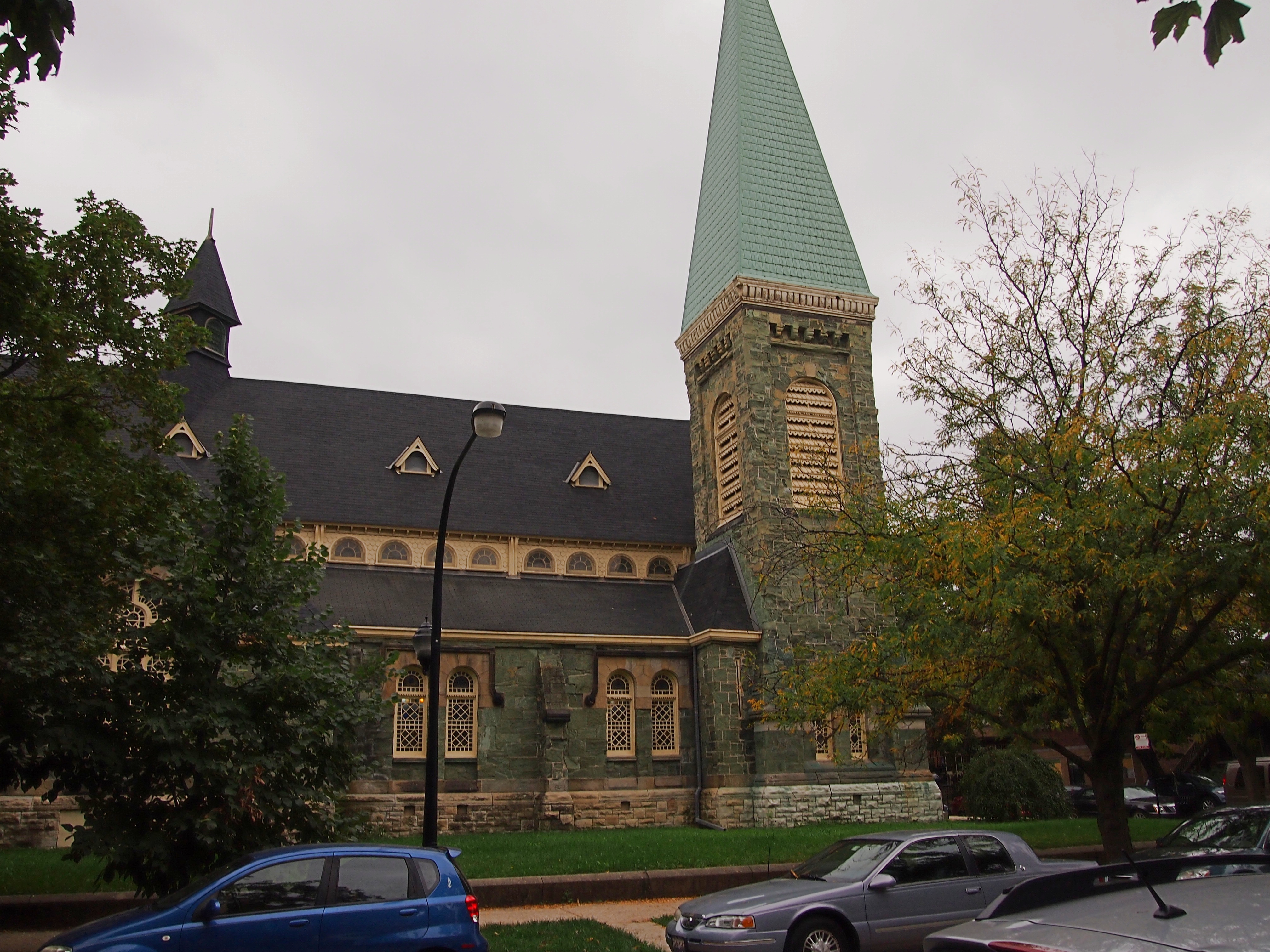The Greenstone United Methodist Church is at the corner of 112th St. and St. Lawrence Ave. and it’s green.
 Yuriko suggested it was covered with moss, but closer inspection reveals that much of the rock itself is green. Apparently it’s made of serpentine quarried in Pennsylvania. I wasn’t familiar with serpentine, so I looked into it. The 1911 Encyclopaedia Britannica says that it’s “a mineral which, in a massive and impure form, occurs on a large scale as a rock, and being commonly of variegated colour, is often cut and polished, like marble, for use as a decorative stone… Although popularly called a ‘marble,’ serpentine is essentially different from any kind of limestone, in that it is a magnesium silicate, associated however, with more or less ferrous silicate.”
Yuriko suggested it was covered with moss, but closer inspection reveals that much of the rock itself is green. Apparently it’s made of serpentine quarried in Pennsylvania. I wasn’t familiar with serpentine, so I looked into it. The 1911 Encyclopaedia Britannica says that it’s “a mineral which, in a massive and impure form, occurs on a large scale as a rock, and being commonly of variegated colour, is often cut and polished, like marble, for use as a decorative stone… Although popularly called a ‘marble,’ serpentine is essentially different from any kind of limestone, in that it is a magnesium silicate, associated however, with more or less ferrous silicate.”
Why aren’t more things built of it? Could be the expense. But it does make for a sturdy structure. Greenstone has been standing since 1882, designed by Solon Beman, who did all of Pullman. He did a number of other things – including a large number of Christian Science churches, interestingly enough – but he’s best known for Pullman.
Back in the days of Mr. Pullman, the structure was built as a Unitarian Church “for all to unite in a union body and get a broad-minded evangelical clergyman,” according to the Pullman Foundation. That dog didn’t hunt, with each denomination going its own way in rented space elsewhere. It also didn’t help that rent was high at Greenstone. In 1907, a decade after Pullman and his company ceased to own the property, Methodists acquired it.
The inside is modestly adorned, with its original cherry wood pews. I’m sorry I didn’t get to hear the organ.
 Again from the Pullman Foundation: “The organ was built in 1882 by the distinguished firm of Steere and Turner as their Opus #170. It is one of the few manual tracker organs remaining in the United States… The organ contains 1,260 pipes ranging in size from the large front pipes to others the size of a pencil. It consists of two manuals for the hands, one for the feet, twenty-one stops and twenty-three ranks of pipes, three couplers and a twenty-seven note-pedal board.”
Again from the Pullman Foundation: “The organ was built in 1882 by the distinguished firm of Steere and Turner as their Opus #170. It is one of the few manual tracker organs remaining in the United States… The organ contains 1,260 pipes ranging in size from the large front pipes to others the size of a pencil. It consists of two manuals for the hands, one for the feet, twenty-one stops and twenty-three ranks of pipes, three couplers and a twenty-seven note-pedal board.”
I don’t know a lot about organs, but that sounds fancy. The foundation further says that “its tracker action means that the valves are mechanically linked to the keys and are directly activated by the organist’s hands and feet. Most organs have an electrical system which eliminates this direct link between the keys and pipes. Today’s organists find playing this organ a physically demanding but emotionally satisfying act.” No organ for old men, you could say.
